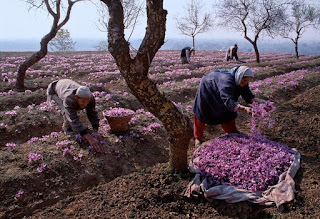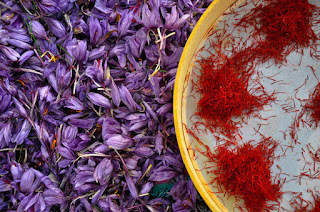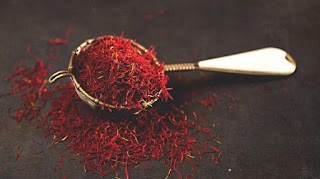Iran Saffron to Export - How to distinguish pure saffron from fake sample?
Iranian Saffron is well-known around the world since Iran is the first producer of this so-called Red Gold”.
It is the time to know about the ways of distinguishing pure Saffron from counterfeit sample.
Saffron is a plant that many researchers believe its first home has been Iran and about 65% of its production in the world is in Iran.
The scientific name of saffron is Crocus Sativus.L and is one of the medicinal plants that dates back more than 2500 years ago.
It is said to be native to Greece and the Mediterranean region, but many researchers believe that saffron origin belongs to the slopes of the Zagros Mountains, especially the Alvand area in Iran, as the most valuable spice in the world.
Saffron has many varieties and about 80 species are mentioned.
Depending on the blooming time different varieties of saffron are divided into three top categories:
- Agricultural saffron (Saffron available in the market), Wild, Caspian, Gilan, Zagros, Long flower, Joghasem and flowering season is in fall.
- Dogol, Arius and Almea, flowering in spring
- Purple and Kurkuri saffron, flowering begins in winter.
Environmental requirements of saffron cultivation
Saffron is grown in different climates with varying conditions in terms of altitude, temperature variations and air humidity.
Saffron cultivation can be found at 2000 meters above sea level.
Low temperatures and a decrease in the intensity and duration of light exposure in winter decrease the growth capacity of the plant and hence decrease the growth rate of this plant.
But the great advantage of saffron is that it can be cultivated in arid or semi-arid regions where there is scarcity of water in the summer.
So saffron is a tropical plant and grows well in areas where temperate climates, hot and dry summers and sunny, autumn and winter are relatively mild.
The plant needs a little water between 600-700 mm in a growing season, which is related to temperature.
Saffron can withstand ambient temperatures of -15 to -20 C in winter and 35-40 C in summer.
The duration of daylighting time has significant effects on saffron flowering. The best lighting duration for this plant is 11 hours.
Spring rains have a significant effect on the propagation of new onions, while second rains in late summer or early autumn help to produce flowers that will give the plant good performance.
Freezing and raining during flowering are very harmful and can cause a great deal of damage to the yield of the plant. Wet and flooded soils (such as rice cultivation) are not suitable for saffron cultivation, as saffron onions in these soils rapidly decay.
Harvesting and yield of saffron
Harvesting the saffron product involves picking flowers and removing stigmas (edible red) from other parts of the flower.
The time of harvesting of saffron crops varies from climatic conditions of saffron points from late October to late December.
Saffron flowers usually appear in late October and gradually increase in number.
The average shelf life of flowers is 3 days if not picked.
Usually the flowering period of saffron is about 15 to 20 days and the flowering period is 10 to 15 days.
The best time to harvest flowers to preserve the quality and aroma of saffron is early in the morning before buds open.
Economic position of saffron
As the most valuable spice in the world and the most expensive agricultural product, saffron has a special place among export products.
At present, Iran is the largest producer and exporter of saffron in the world and more than 65% of the world production of this precious product is devoted to Iran.
Although this valuable spice has been cultivated all over Iran in the past, most of the country's saffron is now produced in Khorasan province (Torbat Heydariyeh, Qain, Birjand and Tabas) and in other provinces the production is lower.
In addition to Iran, the main countries producing saffron are India, Greece, Azerbaijan, Spain, Morocco and Italy.
At a saffron crop, at the peak of the fifth year's crop yield, about one ton of flowers per hectare is harvested, of which only about thirteen kg of dried saffron can be produced.
A solution to identify pure saffron from counterfeit
The saffron plant can be squeezed between the fingers and shaped like a ball to see if the round shape is maintained.
Because pure saffron is flexible and breaks down quickly when pressed.
In addition, if we approach matches with pure saffron, we can see that the pure sample will quickly ignite and hardly leave a trace.
While a string of fake saffron burns hard, it throws sparks around, easily extinguishes and leaves considerable residue.
Here are some of the most common saffron cheats ever made:
Cheating method
- Mixing with old saffron extract
- Add flags or creams of filigree and colored flowers
- Add moisture, impregnate with syrup, honey, glycerin, barium sulfate, sodium sulfate, calcium sulfate, calcium carbonate, lactose, starch or glucose, potassium nitrate, sodium brat
- Add parts of other plants such as evergreen flowers, stigmas of other species of saffron, milled red pepper, turmeric
Iran Saffron to Export - How to distinguish pure saffron from fake sample
the ,saffron , ,of ,and ,in ,of saffron ,saffron is ,in the ,of the , ,most valuable spice ,many researchers believe




درباره این سایت